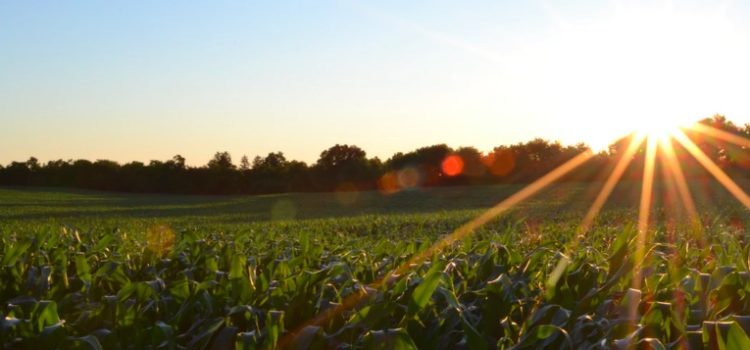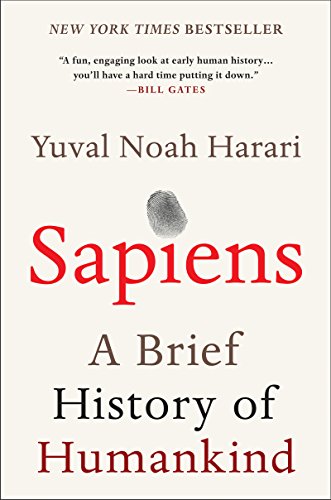

This article is an excerpt from the Shortform summary of "Sapiens: A Brief History of Humankind" by Yuval Noah Harari. Shortform has the world's best summaries of books you should be reading.
Like this article? Sign up for a free trial here .
What was the Agricultural Revolution? How did it affect homo sapiens, and how did it affect the rest of the animal kingdom?
The Agricultural Revolution was the moment in human history, between 9500 and 8500 BC, when Sapiens started shifting from forager lifestyles to a life revolving around agriculture. The revolution started independently in China, the Middle East, and Central America.
We’ll cover the causes of the Agricultural Revolution and how it impacted both humans and animals.
What Was the Agricultural Revolution?
The second major upheaval of the Sapiens’ way of life was the Agricultural Revolution. We’ll chart the advent of farming while also introducing the idea that success isn’t the same thing as happiness.
Sometimes, our evolutionary success is at odds with our well-being and happiness. Evolutionary success is pretty easy to judge and quantify—the more individuals of your species that survive, and the more copies of your DNA in existence, the more successful you are. Happiness, on the other hand, is harder to quantify.
Sapiens isn’t the only species that matters. As we examine their history, we should also look at how the success of Sapiens affected other species.
The Success (and Suffering) of People During the Agricultural Revolution
What was the Agricultural Revolution? About 10,000 years ago, between 9500 and 8500 BC, Sapiens started shifting from forager lifestyles to a life revolving around agriculture. This was the Agricultural Revolution. It was so successful for our species that we went from 5-8 million foragers in 10,000 BC to 250 million farmers by the first century AD.
This gradual movement of the farming revolution started independently in the Middle East, China, and Central America, areas that had plants and animals, like wheat and sheep, that were easy to domesticate. The movement had a monumental impact on not only the way we live today but on our diet. 90% of the calories in the modern diet comes from plants domesticated by our ancestors, like wheat, rice, and potatoes.
The Agricultural Revolution: Progress?
Many people have suggested that the Agricultural Revolution was the product of a species that was becoming more intelligent, but there’s no evidence of this. The move toward farming isn’t necessarily common sense.
For example, agriculture was much harder than foraging and hunting for food, and left farmers more vulnerable to disease and hunger. Farmers also had a less nutritious diet than foragers due to its lack of variety.
Agriculture also led to promotion of disease. All the extra food they grew resulted in a population boom. More people meant closer living quarters, leading to disease epidemics. Child mortality soared.
Most of the agricultural surplus went to the elite, and they probably did live better lives than their ancestors. But the Agricultural Revolution didn’t translate to a better life for most individuals.
We won the game of evolution, which judges our success based on how many of us there are on the planet, but we lost individually. In other words, the Agricultural Revolution allowed more people to survive, but the conditions under which each individual lived were worse.
The Success of Wheat
Wheat is one of the most successful plants ever. About 870,000 square miles of the earth are covered by wheat. This is the area of Britain, multiplied by 10.
We like to think we’re the masters of our land, and everything that grows on it, but humans didn’t domesticate wheat. Wheat domesticated humans.
- Wheat couldn’t grow in soil with rocks and pebbles, so Sapiens had to bend over and clear the fields.
- Wheat couldn’t grow around other plants, so Sapiens had to frequently weed the ground it grew in.
- Wheat was fragile, so Sapiens had to protect it from worms, blight, rabbits, and locusts. Sapiens guarded it from other animals by building fences and physically standing there, watching over it.
- Wheat needed a lot of water, so Sapiens dug canals and dragged buckets of water back and forth from rivers and water sources.
Humans hadn’t evolved for this work. It killed their backs, knees, necks, and feet. Further, there’s evidence of new injuries like slipped discs, hernias, and arthritis.
And what did wheat offer in return? Not much. Wheat doesn’t have many vitamins and minerals. It didn’t offer a better diet for Sapiens. And it didn’t offer more stable living. Wheat cultivation was dependent on external factors like plentiful rain, no swarms of locusts, and no fungus. A lot had to go right for wheat to grow and thrive.
Further, if people had a plot of land, they also had to protect that land from neighbors. Unlike foragers, when farmers didn’t get along with others in their band, it wasn’t easy to pick up and move. Farmers stayed and fought. Therefore, wheat didn’t offer a more peaceful way of life. Some studies indicate that 15% of deaths at the time were the result of human violence.
There was one benefit, however: life lived in one place, in a home and with fences, did provide more protection from wild animals and the elements.
If the Benefits Were Few, Why Agriculture?
The move from foraging to agriculture during the agricultural revolution wasn’t necessarily a conscious choice. Rather, it was a gradual process of small, seemingly insignificant changes that added up to a monumental revolution.
18,000 years ago, the last ice age retreated, increasing rainfall. This was great for wheat and other grains, which started to spread. Because there was more wheat, people started eating more of it, taking it back to their campsites to grind and cook. On the way to the campsite, some of the small grains were sprinkled along the path, helping the spread of wheat.
Humans burned the forests to create clearings that attracted animals. This also cleared the area of large trees and bushes that would have competed with the wheat for sunlight and water. Where wheat prospered, nomads would settle for a few weeks, enjoying the plenty. A few weeks turned into a few more, and over generations, these areas became permanent settlements.
People started storing grain for later and invented stone scythes, pestles, and mortars. Because they saw that wheat grew better when it was buried deep in the soil rather than sprinkled on top, humans began to hoe and plow the fields. Weeding, watering, and fertilizing followed. With all this time spent on tending the wheat, there was less time to hunt and gather. Sapiens had become farmers.
The Success (and Suffering) of Animals During the Agricultural Revolution
What was the Agricultural Revolution, and how did it affect animals? Animals were also affected by the transition to agriculture during the agricultural revolution. Evolutionarily speaking, animal farming has been a huge success for domesticated animals. After humans, the most numerous large mammals in the world are cows, pigs, and sheep.
But as with humans, the Agricultural Revolution may have brought evolutionary success, but it didn’t bring success for the individual animal. Domestication of animals made their lives far worse than during pre-agriculture times. For example, in the wild, chickens live 7-12 years and cows live 20-25 years. But domesticated chicken and cows are allowed to live only a few weeks to a few months.
Although we don’t often think about it, animals like bulls and horses have social ties and social structures, just like other animals. Domestication breaks those ties, separating infants from mothers at birth. This was true during the Agricultural Revolution, and it’s true now. Rather than freely roaming the land, domesticated animals are bridled and kept in cages or pens barely bigger than their bodies. Calves, for instance, spend their few months alive in cages with only inches of wiggle room. They never have contact with other calves. Further, they’re not allowed to walk because this strengthens their muscles, and strong muscles mean tough steak.
Whether male or female, farm animals have it rough. Males are often castrated or mutilated to make them more docile. Many female farm animals are there to produce milk. To lactate, cows, sheep, and goats need to give birth, so the females are continually pregnant for most of their lives. And once they give birth, the baby is sent to the meat industry, or worse: it’s common practice to kill the newborns to keep them from drinking the mother’s precious milk.
Some animals did actually find individual success with the success of their species. Sheep, dogs, cats, and many horses live comfortable lives. But for most domesticated animals (and humans), the power and success of the collective meant the suffering of the individual during the Agricultural Revolution.
So, What was the Agricultural Revolution? It was the shift from nomadic to farm life and the domestication of animals and plants. The Agricultural Revolution wasn’t necessarily good for people or animals.
Prior to the Agricultural Revolution, people didn’t live in houses. They roamed, following herds of animals or finding areas of more plant growth. With domestication of plants and animals, humans began living in houses (the word “domesticate” comes from the Latin for “house”).
The home, a new concept, measured a few dozen feet. It represented a separation from the rest of your band. Whereas nomads lived together, with the development of the house we became more individualistic, self-centered animals.
We also separated ourselves from the rest of nature. We cleared forests and fields, planted trees and proclaimed them “ours,” fenced off “our” land, and eliminated pesky weeds and animals. We were the masters of our individual universes, but this came with a lot of responsibility and the anxiety that attends it.
Anxieties About the Future
Nomadic foragers hadn’t given too much thought to what the future had in store. They were mostly focused on what they did and had in the present. There was little they could do to influence future events, so they didn’t worry about it. This saved them a lot of anxiety.
But the Agricultural Revolution required a focus on the future. There were three reasons:
Reason #1: Agriculture depends on seasonal cycles that last a year. If you’re in the harvest season and you’re not thinking ahead about the next cultivation season, you won’t have a harvest next year. What farmers do today affects what happens next year, or even years from now.
Reason #2: Agriculture is risky. Droughts, floods, and pestilence, among other calamities, could take out a farmer’s entire harvest. If farmers didn’t plan ahead, building up reserves, they starved. Consequently, farmers were always anxiously looking at the sky, trying to anticipate storms, dry periods, and floods.
Reason #3: Unlike their nomadic ancestors, farmers could actually do something today to influence events tomorrow. For example, they could sow more seeds, dig another canal, and plant more trees. The responsibility to plant the seeds that wouldn’t yield for decades kept them forever looking forward.
Peasant farmers rarely achieved the security they sought. Surplus went to more and more children, or the elites that lived off them. They always had just enough to survive, perpetually working just to have enough to eat.
———End of Preview———

Like what you just read? Read the rest of the world's best summary of "Sapiens" at Shortform . Learn the book's critical concepts in 20 minutes or less .
Here's what you'll find in our full Sapiens summary :
- How Sapiens outlived and outlasted the 8+ other human-like species on Earth
- The 3 critical revolutions in human existence that led to our domination of the planet
- How much of what powers our world today is really just a shared mass delusion
- What the future of humanity might look like






